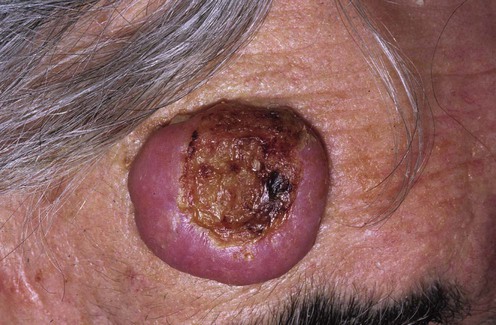Keratoacanthoma

Management strategy
A KA classically has three clinical stages:
 Proliferative – early rapid growth to form a crateriform nodule
Proliferative – early rapid growth to form a crateriform nodule
 Involutional – the lesion regresses, usually within 4 to 8 months.
Involutional – the lesion regresses, usually within 4 to 8 months.
Small, solitary keratoacanthoma
First-line therapies








 Curettage
Curettage Excision
Excision Observation
Observation Topical imiquimod
Topical imiquimod Intralesional methotrexate
Intralesional methotrexate Topical 5-fluorouracil
Topical 5-fluorouracil Photodynamic therapy
Photodynamic therapy Argon laser
Argon laser Radiotherapy
Radiotherapy Intralesional 5-fluorouracil
Intralesional 5-fluorouracil Intralesional methotrexate
Intralesional methotrexate Intralesional methotrexate followed by surgery
Intralesional methotrexate followed by surgery Intralesional interferon
Intralesional interferon Oral acitretin
Oral acitretin Oral isotretinoin
Oral isotretinoin Intralesional fluorouracil
Intralesional fluorouracil Oral erlotinib
Oral erlotinib Radiotherapy
Radiotherapy Oral isotretinoin
Oral isotretinoin Cessation or completion of therapy
Cessation or completion of therapy Photodynamic therapy
Photodynamic therapy Topical 5-fluorouracil
Topical 5-fluorouracil Oral erlotinib
Oral erlotinib